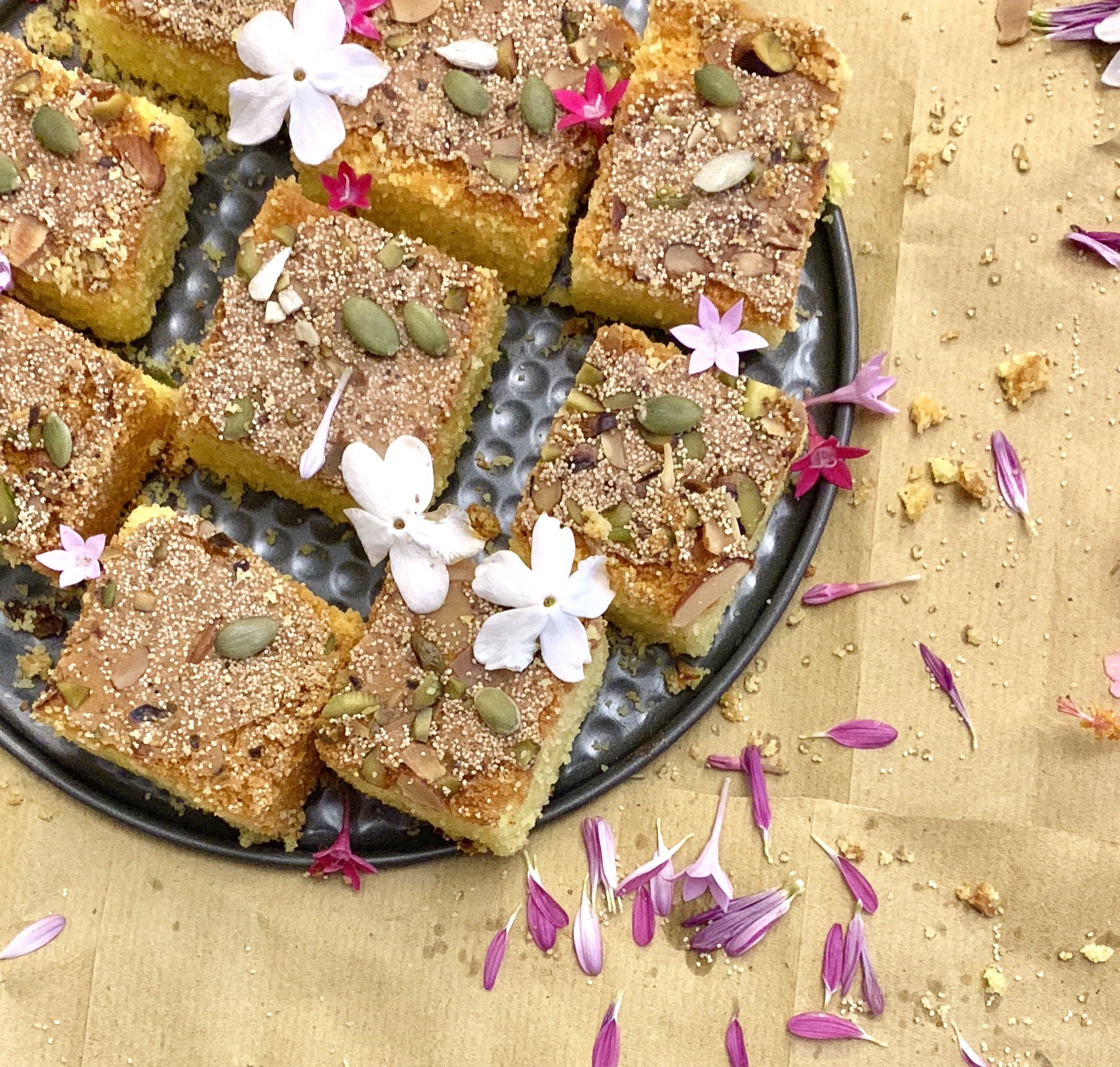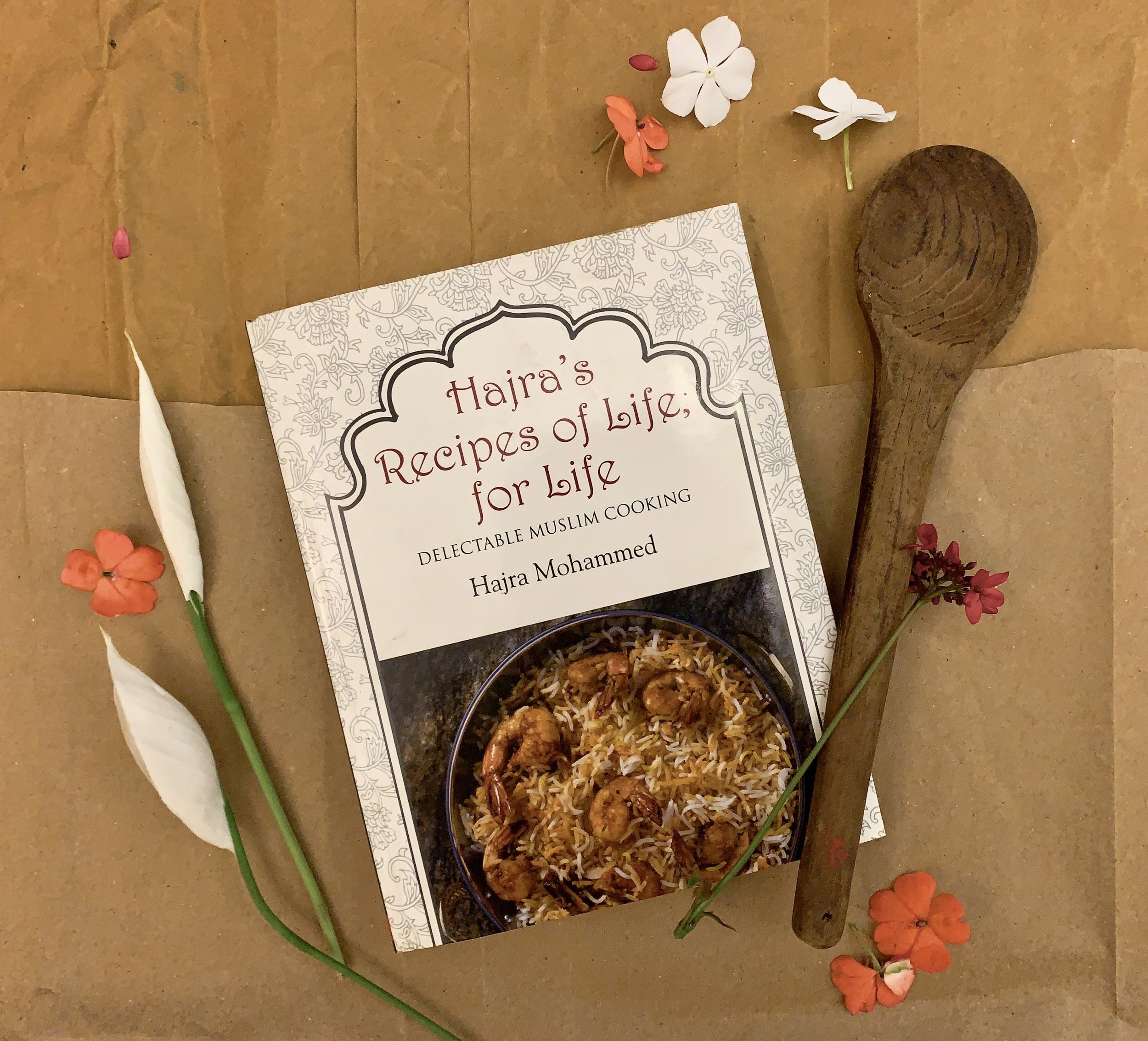Kutchi Memon Cuisine is a Confluence of Cultures

Zoya Naaz Rehman explains the third culture kid that is Bangalore’s Kutchi Memon community, and rote, a semolina dessert symbolic of the marriage of Hindu-Muslim foodways.
I spent a long time trying to eliminate the word pandemic from this piece, but there’s no escaping it; this was a culinary exploration born out of conversations (with my mother), proximity (to my roots), and time (the pandemic’s only gift to us).
The Origins of the Kutchi Memons
Amidst the traffic and corporate offices and general big-city things of Bangalore, lies nestled a rather small, immigrant community from Kutch, that is a little bit like a third culture kid, and that my family belongs to, called the Kutchi (also: Cutchi) Memon community. This community traces its history back to pre-partition Sindh, where it descended from the Lohanas, a Hindu Vaishya caste that was involved in business and trade. In 1422, 700 families of the latter converted to Islam under the influence of Arab Sufi saints, and were called the Memons. Like their Lohana ancestors, the Memons were engaged in trade, and their choice of livelihood led them to be semi-nomadic, since they went wherever the trading environment took them. One such destination was Kutch, in present day Gujarat, and their extended sojourn there conferred upon them the epithet of Kutchi, giving rise to the Kutchi Memon community, as it is known today.
I mentioned earlier that Bangalore’s Kutchi Memon community is a little like a third culture kid, because it exists on the boundary of two parent cultures, all while living in a foreign land. The influence of both, the Kutchi/Gujarati and Arab ancestors, on Kutchi Memon culture has lingered through the centuries, but if you look closely, bits of Bangalore can be discerned too. Likewise, the Kutchi Memon foodways lie at the point of confluence of its parent cultures. My analysis of Kutchi Memon household recipes has shown that most Memon food uses a staple set of spices and seasonings: ginger, garlic, red chili powder, turmeric, coriander, and cumin (from cumin comes zeera-methi, which singularly represents the Kutchi Menon pantry in a jar, but that’s a story for another day). All of these are characteristic to Saurashtra’s cuisine, the region of which Kutch is a part. Tamarind is a key ingredient in Memon food, and lends it the same umami flavor that is distinctive of Gujarati cuisine. Alongside these flavors on the Memon table, exist the kebabs, kormas, and koftas– meat dishes adapted from Arab food culture.
Hajra’s Recipes of Life, for Life
In Bangalore’s fairly tight-knit Memon community, I’ve realized that food is governed largely by intuition. I never know how much salt or spice to add to anything, because while I was growing up, if you ever asked anyone from the Kutchi Memons, the only response you’d ever receive is اندازے سے, andaaze se, by estimation. Frustrating as this was, there’s a perfectly logical explanation for this shared habit. The eponymous language that the Kutchi Memon identity is tied to, Kutchi, is not a written language; it is what is now known as a Boli, a spoken tongue with no written script. In light of this, it seems obvious that food is cooked this way, because the shared community experience is that recipes and cookbooks do not exist. Food is learned and taught through oral tradition, and is embedded knowledge.
A quick google search will corroborate the fact that Kutchi cookbooks are rare, and Kutchi Memon ones even more so. There is little written record of our foodways because of the absence of a written script, but in 2010, a cookbook, titled Hajra’s Recipes of Life, for Life, by Hajra Mohammed, was published. It documents the quotidian of Kutchi Memon kitchens in Bangalore. I am of the opinion that authenticity in food is a controversial concept, but I would go so far as to describe this cookbook as a peek into your grandmother’s or great grandmother’s kitchen, if you’re Kutchi Memon. If not, it is an invitation into our matriarch’s kitchens.
How to Make Kutchi Memon: Rote
Likewise, I’ve chosen to share a recipe that belongs to my mum, of a dish that is undeniably Kutchi Memon: Rote. A semolina cake that evolved from the Middle Eastern Basbousa, it is dense both in culture and in flavour. It is Kutchi Memon food in a nutshell — nutritious, flavourful and made from kitchen cupboard staples that can be easily transported. You don’t need an occasion to eat or make rote; it is a dish of celebration, strength, and comfort in equal parts. While it is rich and decadent and perfect for an occasion like Eid, my earliest memories of it are from suhoor, the pre-dawn meal during Ramadan, once again a testimony of its energy-rich nature. Rote is traditionally a dessert, but I recommend eating it as breakfast food or a snack, for which it is equally good.
As someone who’s perpetually perched on the fence between food studies and nutrition/public health, I believe in retaining the soul of the food, but giving it the space to evolve and be shaped by the (potential) needs of those that cross paths with it. If you consume rote (or would like to) frequently, consider substituting the ghee in this recipe with coconut oil (1:1). This has the same binding properties that ghee brings to this recipe, along with its medium chain triglycerides (MCT) that your body will thank you for. I also want to encourage people to personalize this recipe: I think almond meal in place of refined flour would bring an incredible nutty flavor to the dish, and my mum wouldn’t hesitate to try using aquafaba instead of eggs (3 tbsp for 1 egg). Add your favorite toppings, or honey, or some lemon zest, or fresh fruit, and do so without fearing a loss of authenticity, because for this dish, it comes from the Kutchi spirit of dynamism and evolution.
RECIPE FOR ROTE OR SEMOLINA CAKE
Ingredients
500 g granulated sugar
1 cup ghee, more if necessary
6 eggs
¼ tsp saffron strands
500 g medium fine semolina
4 oz refined flour/maida
1 cup warm milk
¼ tsp powdered nutmeg
2-3 pods cardamom, powdered
8-10 powdered cloves
Oil for lining the baking dish
poppy seeds/khus khus, to top
100 g almonds and pistachios, roasted and slivered
Method
Add the sugar and ghee to a mixing bowl. Cream them until they blend into each other completely using a stand mixer.
Add the eggs one at a time, and continue whisking.
Add the saffron to 3 tbsp of the warm milk. Once the saffron has leached into the milk, add the saffron-milk mixture to the rote batter and continue whisking.
Sift the semolina and flour together.
Fold in small quantities of the semolina-flour mix into the bowl. Add the remaining milk in increments as you go.
Add the powdered cardamom, cloves, and nutmeg.
Pour the batter into a baking dish lightly lined with oil. Level the contents.
Sprinkle the poppy seeds and nuts on top.
Keep it covered for an hour and allow it to rest.
Bake in an oven preheated at 195°C for 30 minutes, till it turns a golden brown.
Zoya is an aspiring food scholar, archiving her exploration of all things food and health on @kohl.lined.perspectives.
ALSO ON THE GOYA JOURNAL










